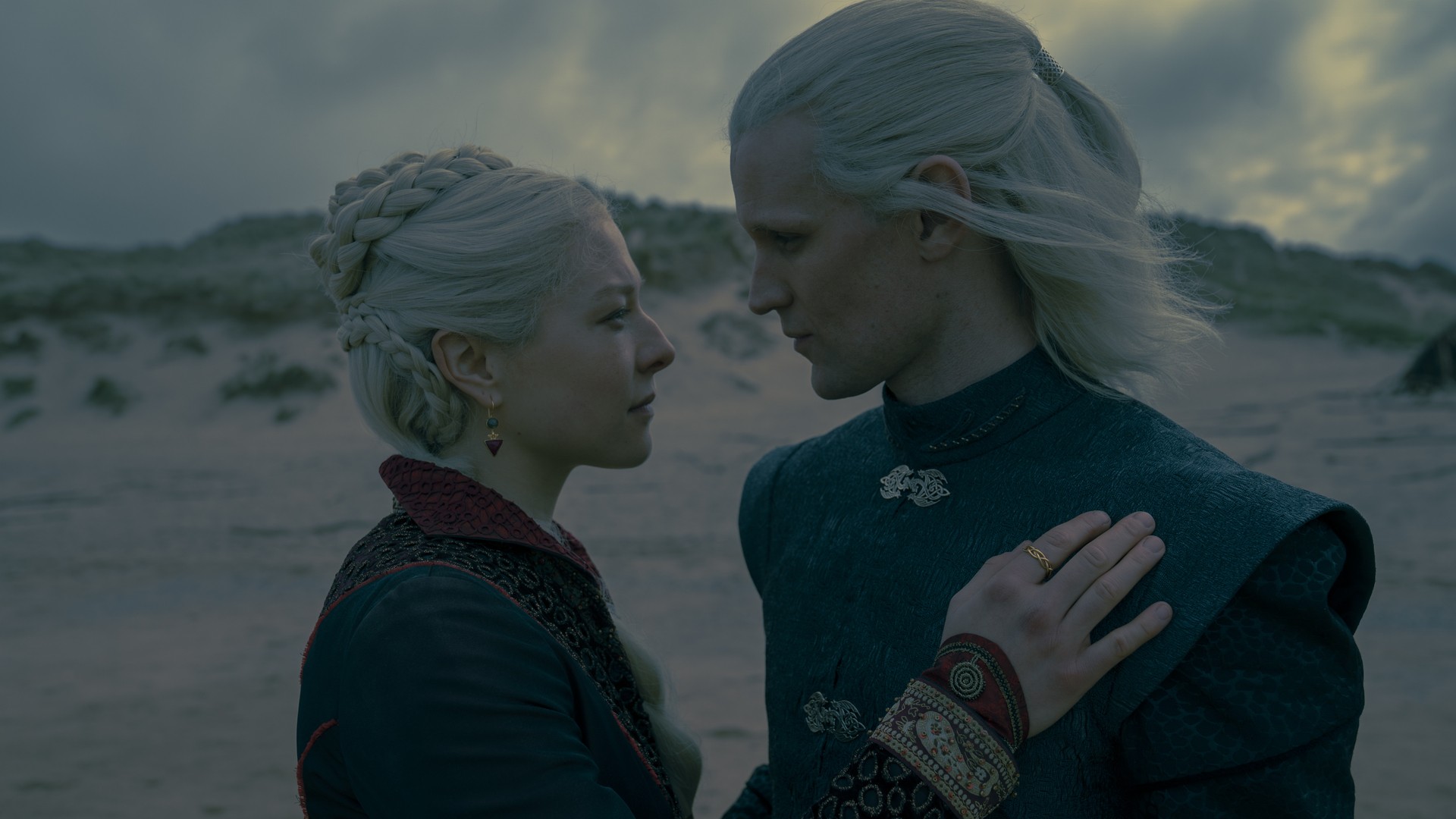Despite being one of the best episodes of the series so far, much of episode 7 of House of the Dragon was overshadowed (quite literally it seems) by how dark some scenes appeared for viewers. While this wasn’t a problem for everyone, many took to Twitter with reports of how hard it was to watch this episode.
This isn’t the first time that director Miguel Sapochnik has made technical and creative choices that result in episodes that are almost impossible for some viewers to see. The season 8 Game of Thrones episode “The Long Night,” which was also directed by Sapochnik, was similarly maligned for its lack of lighting. Even though IGN shared tips on how to enhance your viewing experience for episodes like this by changing brightness settings and watching at off-peak times, there’s only so much the average viewer can do when episodes are made this dark on purpose.
For both “The Long Night” and this week’s “Driftmark,” Sapochnik’s creative choices have been defended by himself and HBO. On the IndieWire Filmmaker Toolkit podcast, Sapochnik defended the darkness of “The Long Night” by saying that “[the episode] is made to be watched in a cinema with as many people as you can stick in there and I don’t have a solution for the problem that arose out of it.” He also talks about how the plot of “The Long Night” influenced the cinematography of the episode. Similarly, HBO Max’s help account on twitter responded to episode 7 complaints and comments saying that House of the Dragon’s lighting issues were also an “intentional creative decision.”
But to this I ask, what is the point of standing so firmly behind your creative vision if this means that so many people are unable to actually see it? Although it is incredibly difficult to shoot scenes at night, films like Nope show that it can be done, and done well. But there’s a difference between filming scenes in the dark and low-light intentionally and shooting during the day just to make scenes look like night in post.
Based on how episode 7 looked on my TV, and these side by side images that seem to compare and contrast how lighting looked during production vs. on-screen, it appears as though that may have been what happened. Vulture’s Kathryn VanArendonk also argues this, and uses the promotional press stills to show that many of the night scenes in this episode were shot in broad daylight, not at night.
Even though House of the Dragon thankfully didn’t look like a dark screen of nothing for everyone, it certainly did for me on my TV and laptop. I’m all for creative freedom and standing by your choices, and I’m totally willing to adjust my brightness, contrast, etc. as long as I don’t have to change it again between episodes or shows (who has time for that?). With such an emphasis on staying home and streaming over the last few years, it’s strange that there isn’t a standard setting for TVs that ensures that everything is equally watchable for everyone regardless of how old or new your screen is.
It’s such a shame that Sapochnik’s creative vision continues to clash with the realities of at-home viewing. This episode of House of the Dragon features great performances by its lead actors, especially Emma D’Arcy and Olivia Cooke in their second outing as Princess Rhaenrya and Queen Alicent, respectively, while also pushing the conflict between the two to its breaking point. So much happened in this episode, and it would have been nice to be able to see it all.
